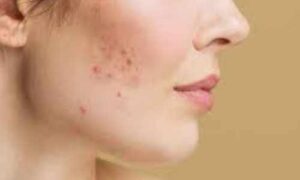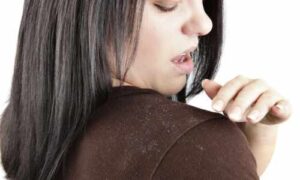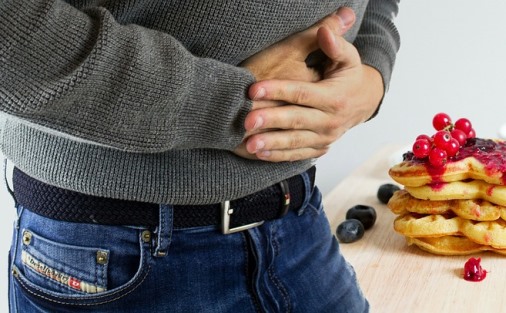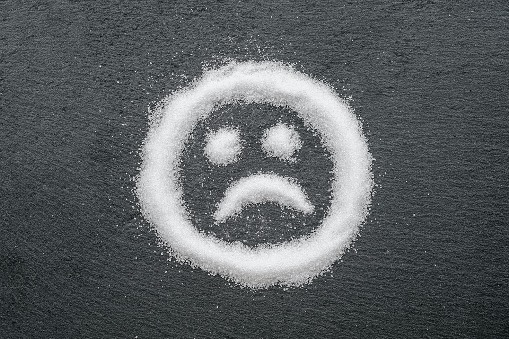ACNE AND PIMPLES - AN OVERVIEW
Acne and pimples, two dreaded words for anyone who has ever dealt with them. These pesky little bumps can appear on our skin at any age and can cause frustration and embarrassment.
Acne and pimples are common skin conditions that affect many individuals. They are characterized by the appearance of red, inflamed bumps on the skin, often on the face, neck, chest, and back. While these conditions can be frustrating and even embarrassing, understanding their causes can help in prevention and treatment.
From teenagers struggling with hormonal changes to adults battling stress-induced breakouts, acne knows no bounds. Despite various treatments such as topical creams or oral medications being available, finding an effective solution can be a trial-and-error process that often leaves individuals feeling defeated. But don’t despair because there are ways to tackle this common issue and achieve clear skin once again!
SYMPTOMS OF ACNE AND PIMPLES
ACNE AND PIMPLES are common skin conditions that can affect individuals of all ages. They are characterized by the presence of inflamed blemishes on the skin, which can vary in severity and appearance.
Some of the most common SYMPTOMS OF ACNE AND PIMPLES include the presence of blackheads, whiteheads, and pimples. These are caused by the overproduction of oil and the buildup of dead skin cells, which clog the pores and create a breeding ground for bacteria.
Other symptoms may include redness and inflammation, especially around the affected area. This can lead to discomfort, pain, and itching. In more severe cases, the blemishes can become larger, more painful, and may even form cysts.
Additionally, individuals with acne and pimples may experience changes in skin texture, such as roughness or scarring. These can have a significant impact on self-esteem and confidence.
CAUSES OF ACNE AND PIMPLES
The primary cause of acne and pimples is the overproduction of oil by the sebaceous glands in the skin. This oil, called sebum, is necessary for keeping the skin moisturized and healthy. However, when too much sebum is produced, it can clog pores and lead to the formation of pimples and acne.
Hormonal changes are another common cause of acne and pimples. During puberty, the body produces an excess of androgens, a type of hormone that stimulates the sebaceous glands to produce more oil. This can result in an increase in acne and pimples during adolescence.
PREVENTION OF ACNE AND PIMPLES
Preventing acne and pimples is essential for maintaining healthy and clear skin. Here are some key points to keep in mind for effective prevention:
Follow a proper skincare routine: Establish a daily routine of cleansing, toning, and moisturizing your skin. Use products that are suitable for your skin type and avoid harsh chemicals.
Keep your face clean: Wash your face twice a day with a gentle cleanser to remove dirt, oil, and dead skin cells that can clog pores and lead to breakouts.
Avoid touching your face: Our hands carry a lot of bacteria and touching your face can transfer these bacteria to your skin, causing irritation and breakouts.
Exfoliate regularly: Exfoliating helps to remove dead skin cells and unclog pores, preventing the build-up of bacteria. However, avoid over-exfoliating as it can strip the skin of its natural oils.
DIAGNOSIS OF ACNE AND PIMPLES
Diagnosing acne and pimples typically involves a visual examination by a healthcare professional, such as a dermatologist. Here are the key aspects of diagnosing acne and pimples:
Physical Examination: The healthcare provider will examine your skin, looking for specific characteristics of acne and pimples. These may include the presence of comedones (blackheads and whiteheads), papules, pustules, nodules, or cysts.
Medical History: Your healthcare provider may ask questions about your medical history, including any previous skin conditions, medications you’re taking, and your skincare routine.
Location and Distribution: Acne and pimples tend to occur in specific areas of the body, such as the face, neck, chest, shoulders, and back. The distribution pattern can sometimes provide clues about the underlying cause.
Severity Assessment: The severity of acne can vary from mild to severe. Healthcare providers may use grading scales to assess the severity of acne, which can help guide treatment decisions.
Differential Diagnosis: Other skin conditions may mimic acne, so it’s essential to rule out other potential causes. These may include rosacea, folliculitis, perioral dermatitis, or fungal infections.
Laboratory Tests: In some cases, your healthcare provider may order additional tests to rule out underlying medical conditions or hormonal imbalances that could be contributing to acne.
Psychological Assessment: Acne can have a significant impact on a person’s psychological well-being. Healthcare providers may inquire about any emotional or psychological effects of acne and provide appropriate support or referrals if needed.
ALLOPATHY APPROACH TOWARDS TREATMENT OF ACNE AND PIMPLES
In allopathic medicine, the treatment of acne and pimples typically involves a combination of topical medications, oral medications, and lifestyle modifications. Here’s an overview of the allopathic approach towards treating acne and pimples:
Topical Treatments:
Benzoyl Peroxide: This ingredient helps to kill bacteria on the skin, reduce inflammation, and unclog pores. It’s available over-the-counter and in prescription strengths.
Retinoids: These derivatives of vitamin A help unclog pores, reduce inflammation, and promote the turnover of skin cells. Common examples include tretinoin, adapalene, and tazarotene.
Topical Antibiotics: Antibiotics such as clindamycin or erythromycin may be prescribed to reduce acne-causing bacteria on the skin and decrease inflammation.
Azelaic Acid: This ingredient helps to unclog pores, reduce inflammation, and inhibit the growth of acne-causing bacteria.
Oral Medications:
Oral Antibiotics: In cases of moderate to severe acne, oral antibiotics like doxycycline, minocycline, or tetracycline may be prescribed to reduce inflammation and kill acne-causing bacteria.
Oral Contraceptives: For women, certain birth control pills containing estrogen and progestin can help regulate hormone levels and reduce acne.
Isotretinoin (Accutane): This powerful oral medication is reserved for severe, cystic acne that hasn’t responded to other treatments. It works by reducing oil production, preventing clogged pores, and reducing inflammation.
Lifestyle Modifications:
Skincare Routine: Using gentle, non-comedogenic cleansers and moisturizers can help prevent further irritation and clogging of pores.
Avoiding Irritants: Avoiding harsh skincare products, touching or picking at pimples, and minimizing sun exposure can help prevent exacerbation of acne.
Dietary Changes: While the link between diet and acne is still debated, some individuals find that avoiding certain foods, such as dairy or high-glycemic-index foods, can help improve their acne.
Procedures:
Chemical Peels: Dermatologists may recommend chemical peels to exfoliate the skin, unclog pores, and reduce acne lesions.
Microdermabrasion: This procedure involves exfoliating the skin’s surface to remove dead skin cells and unclog pores.
Laser or Light Therapy: Certain laser or light-based treatments can target acne-causing bacteria, reduce inflammation, and promote skin healing.
AYURVEDA APPROACH TOWARDS TREATMENT OF ACNE AND PIMPLES
Ayurveda, the ancient Indian system of medicine, offers a holistic approach to the treatment of acne and pimples. According to Ayurveda, acne and pimples are primarily caused by an imbalance in the body’s doshas, particularly pitta and kapha. Pitta represents fire and water elements, responsible for digestion and metabolism, while kapha represents earth and water elements, responsible for structure and lubrication in the body.
Here are some common Ayurvedic approaches towards treating acne and pimples:
Dietary Recommendations: Ayurveda emphasizes the importance of a balanced diet to maintain overall health and treat skin conditions. Foods that aggravate pitta and kapha doshas, such as spicy, oily, fried, and processed foods, should be avoided. Instead, focus on incorporating cooling and detoxifying foods such as fresh fruits, vegetables, whole grains, and plenty of water.
Herbal Remedies: Ayurvedic herbs and formulations are often used to purify the blood, detoxify the body, and reduce inflammation associated with acne and pimples. Some commonly used herbs include neem, turmeric, aloe vera, sandalwood, manjistha, and triphala. These herbs can be taken internally or applied topically as pastes, creams, or oils.
Internal Cleansing: Ayurveda recommends internal cleansing practices known as Panchakarma to eliminate toxins from the body and restore balance to the doshas. Panchakarma therapies such as Virechana (therapeutic purgation) and Basti (medicated enema) may be prescribed by Ayurvedic practitioners to address underlying imbalances contributing to acne and pimples.
Lifestyle Modifications: Stress and poor lifestyle habits can exacerbate acne and pimples according to Ayurveda. Therefore, adopting stress-reducing practices such as yoga, meditation, and pranayama (breathing exercises) can be beneficial. Adequate sleep, regular exercise, and maintaining proper hygiene also play a crucial role in managing acne and promoting healthy skin.
Ayurvedic Skincare: External application of Ayurvedic skincare products can help cleanse, nourish, and rejuvenate the skin. Herbal face packs, oils, and scrubs containing ingredients like turmeric, neem, rose water, and honey are commonly used to treat acne and pimples while promoting a clear and radiant complexion.
Consultation with an Ayurvedic Practitioner: Since Ayurvedic treatment is highly individualized based on one’s unique constitution (prakriti) and imbalance of doshas (vikriti), it’s essential to consult with a qualified Ayurvedic practitioner for personalized recommendations and guidance.
ROLE OF PANCHKARMA IN TREATMENT OF ACNE AND PIMPLES
Panchakarma, a comprehensive detoxification and rejuvenation therapy in Ayurveda, plays a significant role in the treatment of acne and pimples. While external skincare and dietary changes can help manage acne symptoms, Panchakarma aims to address the root cause by eliminating toxins (ama) from the body and restoring balance to the doshas (bioenergetic forces).
Here’s how Panchakarma contributes to the treatment of acne and pimples:
Detoxification: Panchakarma therapies such as Vamana (therapeutic vomiting) and Virechana (therapeutic purgation) help eliminate accumulated toxins from the body. These toxins, known as ama in Ayurveda, can clog the channels (srotas) of the body, including the skin’s pores, leading to acne and pimples.
Balancing Doshas: Panchakarma treatments are designed to balance the doshas, particularly pitta and kapha, which are often implicated in acne and pimple formation. By addressing the underlying doshic imbalances, Panchakarma helps prevent the recurrence of skin problems.
Stress Reduction: Stress is a common aggravating factor for acne and pimples. Panchakarma therapies such as Shirodhara (pouring of medicated oil on the forehead) and Abhyanga (therapeutic oil massage) promote relaxation, reduce stress levels, and support overall well-being, which can indirectly benefit skin health.
Improving Digestion and Metabolism: According to Ayurveda, impaired digestion (agni) can lead to the accumulation of toxins in the body, contributing to skin issues like acne. Panchakarma therapies, along with dietary modifications and herbal supplements, help improve digestion, metabolism, and the elimination of waste products.
Enhancing Skin Health: Certain Panchakarma treatments, such as Udvartana (herbal powder massage) and Pinda Sweda (herbal bolus massage), help improve circulation, exfoliate dead skin cells, and nourish the skin. These therapies promote detoxification at the skin level, resulting in clearer and healthier-looking skin.
Long-Term Benefits: While Panchakarma is often used as a short-term intensive detoxification program, its effects can have long-term benefits for skin health. By addressing the root cause of acne and pimples and promoting overall balance and vitality, Panchakarma helps maintain healthy skin in the long run.
ACNE AND PIMPLES TREATMENT AT DR MONGA MEDI CLINIC
At Dr Monga Clinic, we offer a holistic approach to treating acne and pimples, combining the best of Ayurvedic and allopathic medicine. In our consultations, we assess your individual needs and develop personalized treatment plans tailored to address the root causes of your skin concerns. Through Ayurvedic principles, we emphasize dietary modifications, herbal remedies, internal cleansing with Panchakarma therapies, and lifestyle adjustments to rebalance your body’s doshas and promote healthy skin. Additionally, our dermatologists provide expertise in allopathic treatments, including topical medications, oral medications, and professional procedures, to target acne effectively and prevent scarring.
By integrating Ayurveda and allopathic medicine, we offer a comprehensive approach to acne treatment that combines the traditional wisdom of Ayurveda with modern medical interventions. Our goal is to not only alleviate your current symptoms but also to address underlying imbalances and promote long-term skin health. Throughout your treatment journey, we ensure close monitoring, regular adjustments to your treatment plan, and coordination between our Ayurvedic practitioners and dermatologists to optimize your results and provide you with the best possible care.
FREQUENTLY ASKED QUESTIONS
While individual triggers may vary, some people find that certain foods such as dairy, sugary foods, and high-glycemic-index foods can exacerbate acne. It’s essential to pay attention to how your skin reacts to different foods and make dietary adjustments accordingly.
Popping or picking at pimples can worsen inflammation, increase the risk of infection, and lead to scarring. It’s best to avoid popping pimples and instead opt for gentle cleansing, topical treatments, and professional interventions if necessary.
Yes, stress can trigger hormonal changes in the body, leading to increased oil production and inflammation, which can exacerbate acne breakouts. Managing stress through relaxation techniques, exercise, and adequate sleep can help reduce the risk of acne flare-ups.
If over-the-counter treatments are not effectively managing your acne or if you experience severe, persistent, or painful acne lesions, it’s advisable to consult with a dermatologist or healthcare professional. They can provide personalized treatment recommendations and help prevent long-term skin damage.
INFORMATIVE ARTICLES ON HAIR AND SKIN PROBLEMS

Acne and Pimples
ACNE AND PIMPLES – AN OVERVIEW Acne and pimples, two dreaded words for anyone who has ever dealt with them. These pesky little bumps can appear

Skin Allergies
SKIN ALLERGIES – AN OVERVIEW Skin allergies, or allergic dermatitis, result from exposure to allergens like foods, plants, metals, or medications. Symptoms include redness, itching,

Dandruff
DANDRUFF – AN OVERVIEW Dandruff is a common scalp condition characterized by the presence of small, white flakes of dead skin that often appear in











